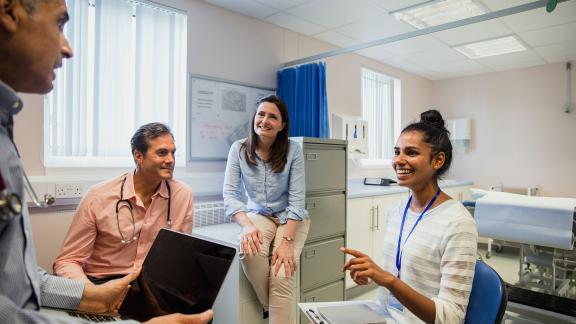Expanding placement capacity webinar
Speakers

Placement capacity is a challenge that health and social care has faced for many years and has only been exacerbated by COVID-19. This webinar recording is an opportunity to hear from employers about how they are doing things differently to expand the placement capacity in their services.
Speakers
- Andrew Keavey, placement education lead, East Lancashire Hospitals NHS Trust, runs a placement hub project across Lancashire and South Cumbria ICS. They have established a mapping model to track placements across its organisation to manage placement capacity and introduced remote virtual reality placements to enhance students’ experiences which has resulted in accommodating more students than ever.
- Terrie Chaplin and Jo Sutton, clinical placement expansion programme leads, Devon training hub, shared the work they have done across health and social care to expand placement opportunities for students in Devon as their acute setting was at capacity. They has worked on a project to place students and apprentices across social care and primary care providers in the region to develop an integrated workforce.
- Maggie Parks, lead nurse practice education, East London NHS Foundation Trust, introduced virtual placements as an alternative to traditional clinical placements to support placement expansion and help students progress through their programme. The trust worked closely with their HEI to pilot virtual learning with their students.
Watch the recording below and view responses to the questions asked during the webinar we didn't have time to answer.
Questions and answers from the session
The speakers are happy to be contacted with questions and for further information.
- Andrew Keavey, East Lancashire Hospitals NHS Trust - andrew.keavey@elht.nhs.uk
- Maggie Parks, East London NHS Foundation Trust - maggie.parks@nhs.net
- Terrie Chaplin and Jo Sutton, Devon Training Hub - terrie.chaplin@nhs.net and jsutton4@nhs.net



